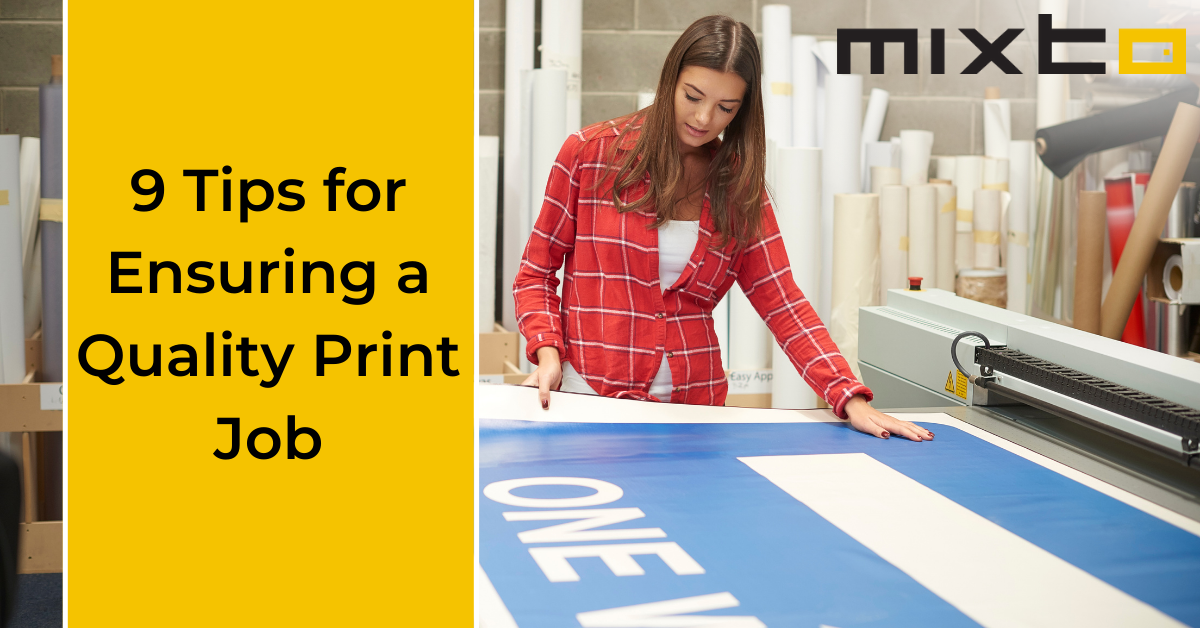
The benefits of plastic ID cards are endless: durability, the card information is clear and easily readable, they’re weatherproof. Plastic ID cards are often used in businesses to keep track of employees who need access to the facility and offer a high level of protection against counterfeiting. Plastic cards are made of Polyvinyl Chloride (PVC), which means they can be printed on both sides and include a barcode.
The plastic card printing job can be a complicated process. Many variables go into ensuring a quality print, and it is significant to know what these factors are to get the best possible results.
Do you want them to be of high quality with vibrant colors and crisp images? Here are some tips on how to make sure they turn out great.
Ways to ensure a quality card print job
1. Start with quality card stock
Quality plastic card stock is essential to producing high-quality print cards. A card printer can print accurately only on a smooth and clean surface. It is important to make sure the plastic card is sized correctly and has clean edges, a flat surface without surface contamination.
1. Color matching
The colors on your monitor will not always be the same as they are when printed. All monitors show slightly different images based on settings and lighting.
Different cards will print slightly differently from each other, and the dye film may vary depending on the batch – for any of these reasons, the card design on your monitor and the printed card design appear differently.
You can adjust the printer’s settings to achieve similar results by altering the print head power or the colors with the brightness level adjustment.
3. Use proper storage
Another thing to consider is how you store your card stock. If you are printing PVC cards, be sure to stock them in a clean place and use a zip-lock bag after opening.
This will cut down on dust and lint that may come into contact with your card stock – which is important because these things can ruin the print.
4. Limit Handling
The most vital aspect of handling cards is to avoid touching the surface with your bare hands, as the oil on them will impair the adhesion of the ink. Be sure to wear rubber gloves for this type of contact if you need to touch an edge.
Clean, crisp cardstock is the key to getting the best print quality – by limiting handling, you are preserving the richness of the cardstock in use.
5. Choosing the Right Card Printer
The design of a card is only as good as the printer that prints it. You are required to choose the right card printer/encoder to help bring that design to life. For example, consider traditional direct-to-card dye-sublimation printers for simple magnetic stripe technology or basic ID card printing.
If your card has embedded electronic technology or high image quality is vital to the card, consider a reverse transfer printer. There are many other printing and encoding options available to meet your needs.
6. Test Prior to Large Scale Production
Testing your printer and designs before a large-scale production ensures that everything works as expected. That is important because it is easy for unexpected issues or errors to go unnoticed when you have many cards printed at once, which will be costly (and time-consuming) during the implementation.
So take additional steps to test such as whether the quality of your images is consistent or whether the data can be read successfully at all checkpoints. Testing also helps in identifying performance problems early so that they can be easily fixed without any difficulty in finding solutions.
7. Printer Driver Options
If you want higher print quality, try adjusting the printer driver options. When modifying printer driver options, such as color correction, Print speed, and image quality, color adjustment, and printhead power settings can help you get high-quality prints.
One of the best ways to achieve this is through printing test cards, which will help identify what works best for your system.
8. Determine the layout and orientation of the badge
When considering a layout for your ID card or badge, it is vital to explore both portrait and landscape orientations. When deciding on the best orientation, you should take into account what will work best.
Things to consider when designing your card’s outline –
How will the card be best displayed and used the most?
Will the card require a hole punch to clip or lanyard? If this is the case, make sure your logo is displayed somewhere else.
Does the card contain vital information which, over time, could be lost due to swipe friction? If so, consider adding a protective coating.
Taking photographs of cardholders
Taking photos for ID cards is a critical step in the process. Make sure the picture is clear, with proper focus. Avoid taking headshots against a white background. Instead, use natural light whenever possible with a colorful background.
If you must take pictures under fluorescent light, you should place a lamp near the subject.
If you need ID card printing services, Mixto is here to assist you with all your ID card printing needs – whether it’s for employee identification badges or photo ID cards. We specialize in plastic ID card printing for a variety of industries. We offer high-quality products that will represent your brand and are sure to meet the requirements of any organization, small business, or individual in need of a plastic card printer.
Contact us today, and let us design the perfect custom business cards for you.
